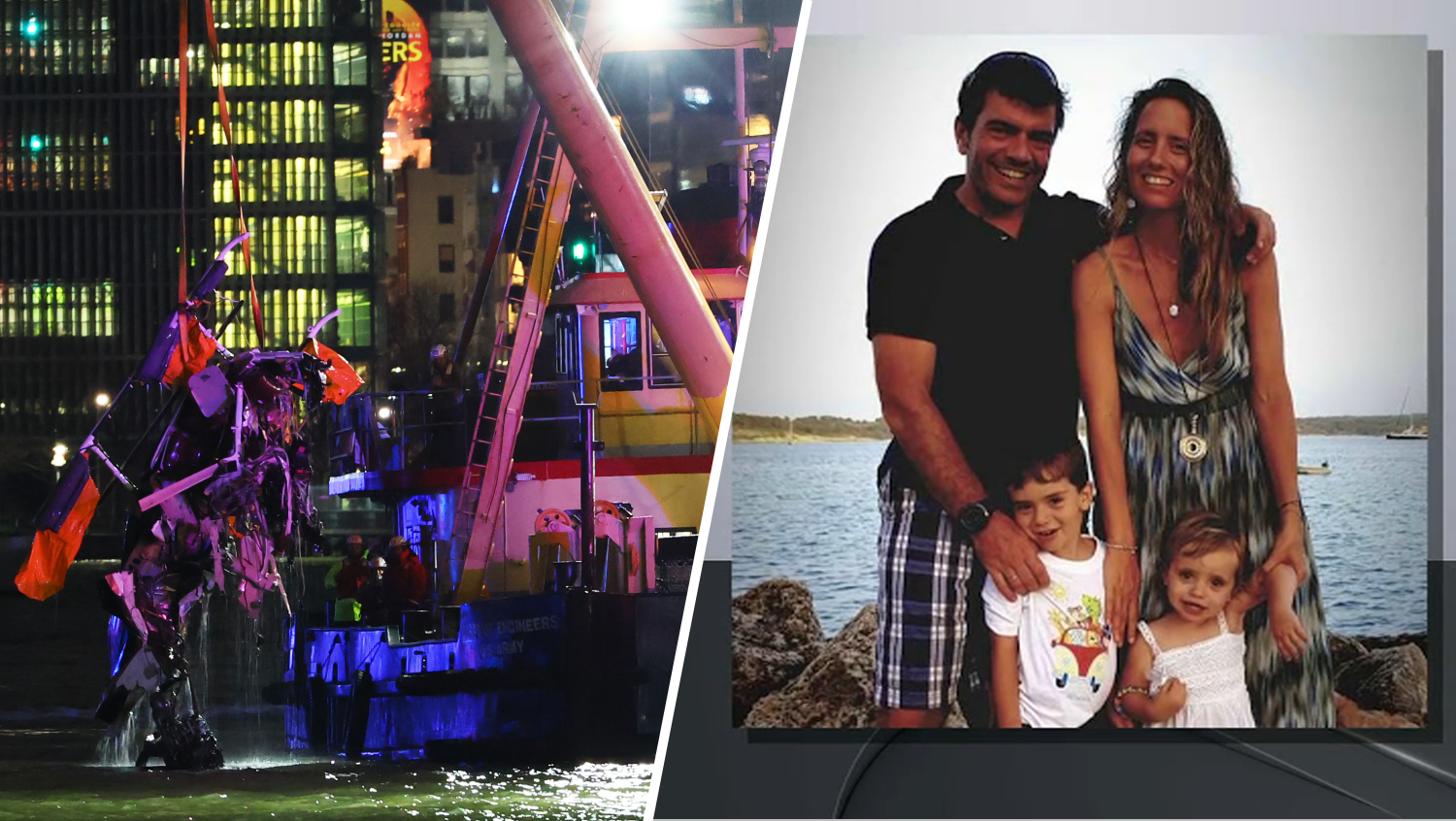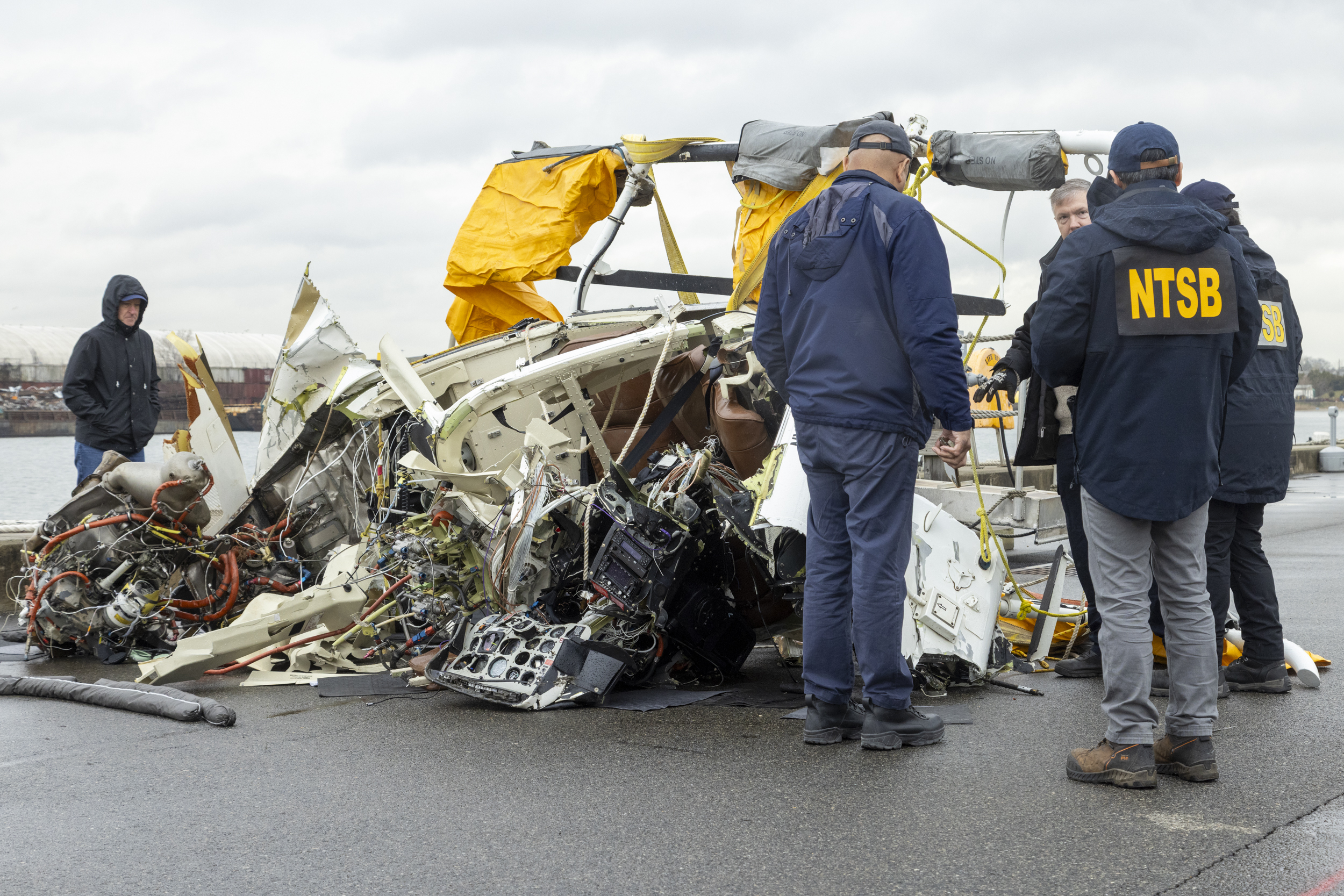Barcelona Family's NYC Crash: Hundreds Mourn, Legacy Lives On
Barcelona Mourns: Family Lost in NYC Helicopter Tragedy
Introduction: A City Weeps for a Family's Loss
Imagine a vibrant city, full of dreams and promises, turning into a scene of unspeakable tragedy. That's what happened when a sightseeing helicopter carrying a family of five from Barcelona crashed into the Hudson River earlier this month. What was supposed to be a joyous celebration of a young girl's ninth birthday became a nightmare, leaving a community shattered and a world in mourning. This is their story, and the story of a funeral that echoed with grief and remembrance.
The Heartbreaking Incident: A Birthday Trip Turns Tragic
The family, eager to experience the iconic New York City skyline from a unique perspective, boarded a helicopter for a sightseeing tour. Little did they know that this adventure would be their last. The helicopter crashed into the Hudson River, claiming the lives of all five family members and the pilot. The details surrounding the crash are still under investigation, leaving unanswered questions and adding to the pain of the bereaved.
Unraveling the Mystery of the Crash
Authorities are meticulously examining the wreckage, flight data recorders, and other evidence to determine the cause of the accident. Was it mechanical failure? Pilot error? Or a combination of unforeseen circumstances? The answers are crucial not only for closure but also for preventing similar tragedies in the future.
A City in Shock: New York's Response to the Tragedy
The news of the helicopter crash sent shockwaves through New York City. From everyday citizens to city officials, everyone felt the weight of the loss. Condolences poured in from around the world, highlighting the universal nature of grief and the shared human experience of loss.
Tributes and Memorials
Makeshift memorials sprung up along the Hudson River, with flowers, candles, and messages of sympathy. New Yorkers, known for their resilience and compassion, came together to offer support to the victims' families and friends. It was a testament to the city's spirit of unity in times of adversity.
The Funeral in Barcelona: A City United in Grief
Back in Barcelona, hundreds gathered in a packed church to say their final goodbyes. The air was thick with sorrow as friends, family, and community members came together to honor the lives of the deceased. The funeral was a poignant reminder of the fragility of life and the enduring power of love.
A Sea of Mourners: Remembering a Life Lived
The church overflowed with people, a testament to the impact the family had on their community. Each person carried their own memories, stories, and shared experiences, all contributing to a collective narrative of a life well-lived, even if tragically cut short.
"New York, New York": A Song of Remembrance
Amidst the tears and heartfelt eulogies, a familiar melody filled the air: Frank Sinatra's "New York, New York." It was a bittersweet moment, a reminder of the city that held both joy and sorrow for the family. The song served as a poignant tribute to their connection to the city and the dreams they held. Is there anything more bittersweet than that?
A Symbol of Hope and Resilience
While the lyrics spoke of ambition and new beginnings, they also resonated with the resilience of the human spirit. Even in the face of unimaginable loss, the song offered a glimmer of hope and a reminder that life goes on, even when it feels impossible.
The Family's Legacy: More Than Just a Memory
The family leaves behind a legacy of love, laughter, and cherished memories. They were active members of their community, known for their kindness and generosity. Their absence will be deeply felt by all who knew them. It's so important to remember the good times, right?
Honoring Their Memory: Keeping the Spirit Alive
Family and friends are determined to keep their spirit alive through acts of kindness, charitable donations, and other initiatives that reflect the values they held dear. Their memory will serve as an inspiration to others to live life to the fullest and to cherish every moment.
The Investigation Continues: Seeking Answers and Justice
While the grieving process continues, the investigation into the helicopter crash is ongoing. The goal is to determine the cause of the accident and to prevent similar tragedies in the future. The families of the victims deserve answers, and justice must be served.
Ensuring Safety: Preventing Future Accidents
A thorough review of safety regulations, maintenance protocols, and pilot training procedures is essential to identify any potential weaknesses and to implement necessary improvements. The safety of passengers and pilots must be paramount in the aviation industry.
The Enduring Power of Community: Supporting Each Other Through Grief
The outpouring of support from both Barcelona and New York City demonstrates the enduring power of community. In times of crisis, people come together to offer comfort, compassion, and practical assistance. This collective spirit of empathy and solidarity is what helps us cope with loss and rebuild our lives.
Finding Strength in Unity
By sharing their grief, offering words of encouragement, and providing practical support, community members can help each other navigate the difficult path of healing. The journey may be long and arduous, but it is made easier by the presence of caring individuals who stand by our side.
Coping with Loss: A Journey of Healing
Grief is a complex and deeply personal emotion. There is no right or wrong way to grieve, and the healing process can take time. It is important to allow yourself to feel the pain, to seek support from loved ones, and to engage in activities that promote emotional well-being.
Seeking Professional Help: When to Reach Out
If you are struggling to cope with grief, it is important to seek professional help. Therapists and counselors can provide guidance, support, and coping strategies to help you navigate the challenges of loss. Remember, seeking help is a sign of strength, not weakness.
Remembering the Joy: Celebrating Life Despite the Pain
While the pain of loss may never completely disappear, it is important to remember the joy that the family brought to our lives. By focusing on the positive memories, we can honor their legacy and keep their spirit alive in our hearts. What better way to honor them?
A Legacy of Love and Laughter
The family's legacy will live on through the stories we tell, the memories we share, and the love that continues to bind us together. Their lives may have been cut short, but their impact on the world will endure forever.
Conclusion: A Time for Remembrance and Reflection
The tragic helicopter crash that claimed the lives of a Barcelona family in New York City is a stark reminder of the fragility of life. As we mourn their loss, let us also remember the importance of cherishing every moment, supporting each other through difficult times, and honoring the legacy of those who have touched our lives. The funeral in Barcelona was a testament to the enduring power of community and the unwavering spirit of hope.
Frequently Asked Questions
- What caused the helicopter crash in the Hudson River?
The exact cause of the helicopter crash is still under investigation by authorities, including the National Transportation Safety Board (NTSB). They are examining various factors such as mechanical failure, pilot error, and weather conditions.
- How many people were on board the helicopter?
There were six people on board the helicopter: five members of a family visiting from Barcelona, Spain, and the pilot.
- Where did the family come from?
The family was visiting from Barcelona, Spain. They were in New York City to celebrate the ninth birthday of their middle child.
- What kind of support is being offered to the family in Barcelona?
The community in Barcelona has rallied around the family, offering emotional and financial support. Local organizations and government agencies are providing grief counseling, financial assistance, and other resources to help them cope with the tragedy.
- How can I offer my condolences or support to the victims' families?
You can express your condolences by sending messages of sympathy to the Spanish consulate or embassy. Many charities and organizations are also accepting donations to support the families impacted by the tragedy. You can also participate in memorial events and tributes to honor the victims.


